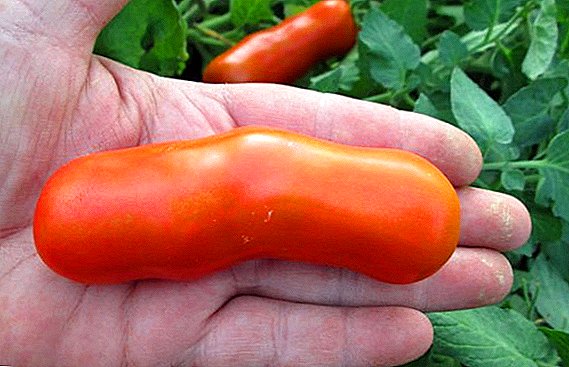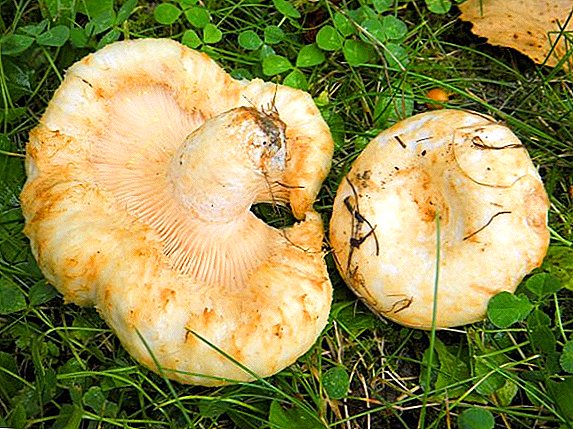
Grapes are extremely useful because they contain vitamins, minerals, antioxidant substances.
Do not be silent, and about their taste.
The grapes will take root on any soil, and does not require special care.
That is why it is so fond of growing.
But, in practice, there are many questions about the care of this crop, and the most common one is grape transplantation, performed in the fall season.
A few words about which bushes can be transplanted

So, what vines can be transplanted is well known. But which bushes are young or still those that are older?
The root system that grows is harder to dig up in old vines, and there is a risk of damaging the roots. Since they are updated more slowly, the plants themselves take root in a new place longer.
Due to the imbalance of the above-ground part of the bush and the root system, there are often violations of fruiting.
It is better to replant bushes at a young age, about seven years old.
However, grape bushes are not advised to replant, as there is a danger to bring the phylloxera. Any, even insignificant, intervention in the development of a grape bush is perceived painfully. But, if, nevertheless, you decided to transplant the grapes to a new place, you need to carefully select the place and time.
Why fall? Will consider Benefits of the Autumn Transplant grapes:
- In the autumn, it is much easier to find the required varieties for transplanting, because the winegrowers finish their digging and there will be more varieties of fresh seedlings;
- At this time, the soil is well hydrated; watering is simplified;
- In addition, in the more southerly lands, the soil will not freeze to the depth at which the roots are located, which will enable the grapes to grow fresh roots during the winter. Also, the vine transplanted in spring in the south, which has not yet had time to get stronger, will suffer from the heat. Autumn planting excludes this.
How to prepare an adult bush for transplant
Preparation of grape bushes begins with the collection of the necessary material tools and material. These are shovel, pruner, clay, manure and fertilizers (potash salt, humus and superphosphate).
To transfer was smoothly needed:
- To ensure the safety of the roots of the grapes, heels and underground trunk.
- Secateurs cut the vine almost 20 cm above the soil level, leave short shoots, long - remove. They can be updated and cut.
- At the base, in a circle, very carefully dig a bush, trying not to damage brittle grape roots. Then, carefully prying with a shovel, scoop out the roots and remove the earth along with the roots onto the surface of the ground.
- Immerse dug roots of grapes in the prepared clay-dung mixture, to do this, mix two shovels of manure and one shovel of clay, then mix everything with water. This mixture, in density, should resemble sour cream. Immerse the roots of the vine in it for a few minutes, remove it, and put it on the ground.
Preparing a pit for planting

The landing pit, where the grapes will be transplanted, is prepared in advance, at least one month before the planned planting. The soil in the pit should settle down a bit, this will avoid excessive root penetration.
Because how well the soil will be prepared, it depends on how quickly the plant will be applied at the new location. By transplanting grapes in the fall, you create nutrient horizons that will provide new root processes of the transplanted plant with nutrients.
To obtain the desired results, deep loosening, abundant watering and fertilization are made at the bottom of the pit.
- Each bunch of grapes sits separately, at least two meters away. A landing pit for each grape cutting is prepared separately, size 50x50 cm, depth from 65 to 100 cm. Nutrients are introduced into the pits, which must be mixed with the ground.
- From dug grapes, for balancing the volume of aboveground and underground parts, pruned shoots. On the grapes, with a good root system, leave 3 sleeves having replacement knots of two buds on each. When damaged roots are removed above-ground shoots. To the root system is deeply laid down, remove the dew roots.
To fertilize the land, ammonium sulphate, superphosphate, humus and wood ash are introduced into the planting pit; potassium salt can be added instead. All fertilizers taken are benignly mixed with the earth, for a better result it is worth pouring in new chernozem.
Depth pits should be no less 65 cm, and better than 1 meterthen all the roots of the grapes will neatly settle there.
The next step is to plant the grapes dug.

A small mound is made in the fossa. While holding the bush, they fill the hole with earth to the roots, they need to be flattened. The earth is compacted. Each vine bush is watered abundantly.. After the water is absorbed, fill the ground and watered. They are covered with earth so that there are types of shoots of knots with four buds.
- The resulting hill should be about 8 centimeters high.
- Transplanted grapes need to be watered once a week, the level should reach the heel roots.
- Gardeners recommend adding barley seed barley to the root area for better survival.
- Ferrous fertilizers with iron content are applied to the soil, which is poor in iron, and rusty nails or cans can be buried in the ground, well scorched over an open fire.
- Transplanted grape bushes in the fall do not prune.
- In the 1st year after transplantation, all inflorescences are removed, and in the second year - a third, which allows the bush to recover faster.
Grapes are transplanted in several ways. The method of transplanting a bush with a clod of earth into a large pit is used for young bushes aged 1-3 years. A few days before landing grapes do not waterand the roots will then stick together.
Repot the grape bushes are not recommended in the same place. Otherwise, the old pit will need to change the ground, i.e. it needs to be updated.
Grape bush with a lump of earth transplanted in the following sequence:
- The grapes are cut, you need to leave only 2 sleeves.
- On each sleeve should be left for two shoots.
- Then gently dig in the bush.
- Cut the lowermost roots.
- The plant is placed in a prepared planting hole 10 cm below the previous level.
- Then they pour earth into the pit and pour two buckets of water.
Landing grapes with bare roots occurs approximately in this order:
- The vine is cut, leaving only 2 to 4 sleeves.
- On the sleeves cut everything. Only two shoots with three buds are left.
- When digging in the bush try not to damage the underground roots.
- Roots located below - remove.
- The grapes are transplanted into a prepared pit, deeper 20 cm below the previous level.
- Then the pit is covered with earth, the plant is watered with 2 buckets of water.
If all the recommendations are followed, the grapes will be able to recover next year after planting, but we will begin to enjoy the fruits only from the second year.
When transplanting grapes without land It is worth adhering to the following recommendations:
- Carefully inspect the roots, in the above-ground part of the left two sleeves, and on the sleeves of 2 shoots.
- Damaged roots are removed and also cut off those roots that grow at a depth of 20 cm. The cut sections are treated with a mixture of clay and manure.
- At the bottom of the pit is a small mound, put a bush in it so that the lower roots fit the hill on all sides. Then the pit is filled, compacted and watered. Mulch the soil with fallen leaves.
- Transplanted grapes need shelter for the winter. The next summer, remove all the inflorescences, not allowing the fruit, the vine is not pruned.
It is best to transplant grapes in the autumn sometimes, when all the leaves will fall, but you should have time before the first frosts, because root system is very fragile and damage sensitive.
Do not forget about watering a bush so that it will take root well in a new place. Doing this requires 1 time for one or two weeks so that the water seeps to the heel roots of the plant.












